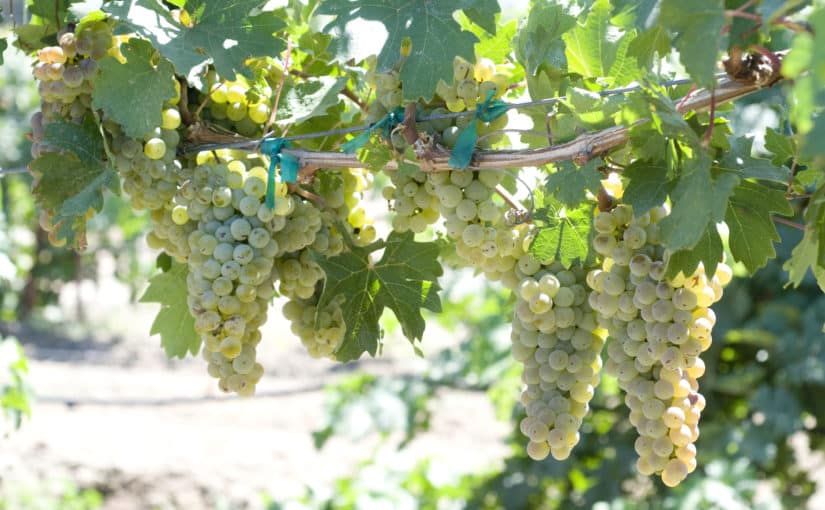For the first time since the 1980s, University of California, Davis, researchers have released new varieties of winegrapes.
The five new varieties, three red and two white, are highly resistant to Pierce’s disease, which costs California grape growers more than $100 million a year. The new, traditionally bred varieties also produce high-quality fruit and wine.
“People that have tasted the wine made from these varieties are extremely excited,” said Andrew Walker, geneticist and professor of viticulture and enology at UC Davis, who developed the new Pierce’s disease resistant varieties. “They are impressed that they’re resistant but also that they make good wine.”
Pierce’s disease a growing threat
Pierce’s disease is caused by a bacterium spread by a group of insects called sharpshooters. It causes grapevine leaves to yellow or “scorch” and drop from the vine. The grape clusters also dehydrate, and infected vines soon die. While the disease has been around since the beginning of wine grape production in California, concerns have escalated with the arrival of the nonnative glassy-winged sharpshooter, which has the potential to spread the disease more rapidly. Pierce’s disease occurs most often near rivers and creeks, and around urban and rural landscaping where sharpshooter populations reside.
Pierce’s disease also threatens wine grapes in the southeastern U.S. Rising temperatures from climate change could increase the spread of the disease, which is thought to be limited by cold winters. Growers in the Southeast can usually only grow Pierce’s disease resistant varieties that don’t have the same wine quality as the European wine grape species, Vitis vinifera, which is typically grown in California.
New varieties more sustainable
To create the new varieties, Walker crossed a grapevine species from the southwestern U.S. and northern Mexico, Vitis arizonica, which carries a single dominant gene for resistance to Pierce’s disease and was used to cross back to Vitis vinifera over four to five generations. It’s taken about 20 years to develop the five patent-pending selections that are now being released.
“These varieties will hopefully make viticulture much more sustainable and provide a high-quality wine that the industry will welcome,” said Walker. “So far there has not been tremendous interest in new winegrape varieties, but climate change may encourage growers to reconsider winegrape breeding as we work to address future climates and diseases.”
Winemaker Adam Tolmach, owner of The Ojai Vineyard in Ojai, planted four of the new varieties as part of a 1.2-acre experimental field trial. The trial was on the same plot of land where Pierce’s disease wiped out his grapes in 1995. The vineyard then and now is organic, so spraying insecticides to fight the disease spread wasn’t an option.
“I wasn’t interested in planting in that plot again until I heard about these new Pierce’s disease resistant grape varietals,” said Tolmach. “This year was the first harvest. We’ve just begun to evaluate the wine but I’m very encouraged.”
Five varieties to suit every taste
(read more) Source: fruitgrowersnews.com
